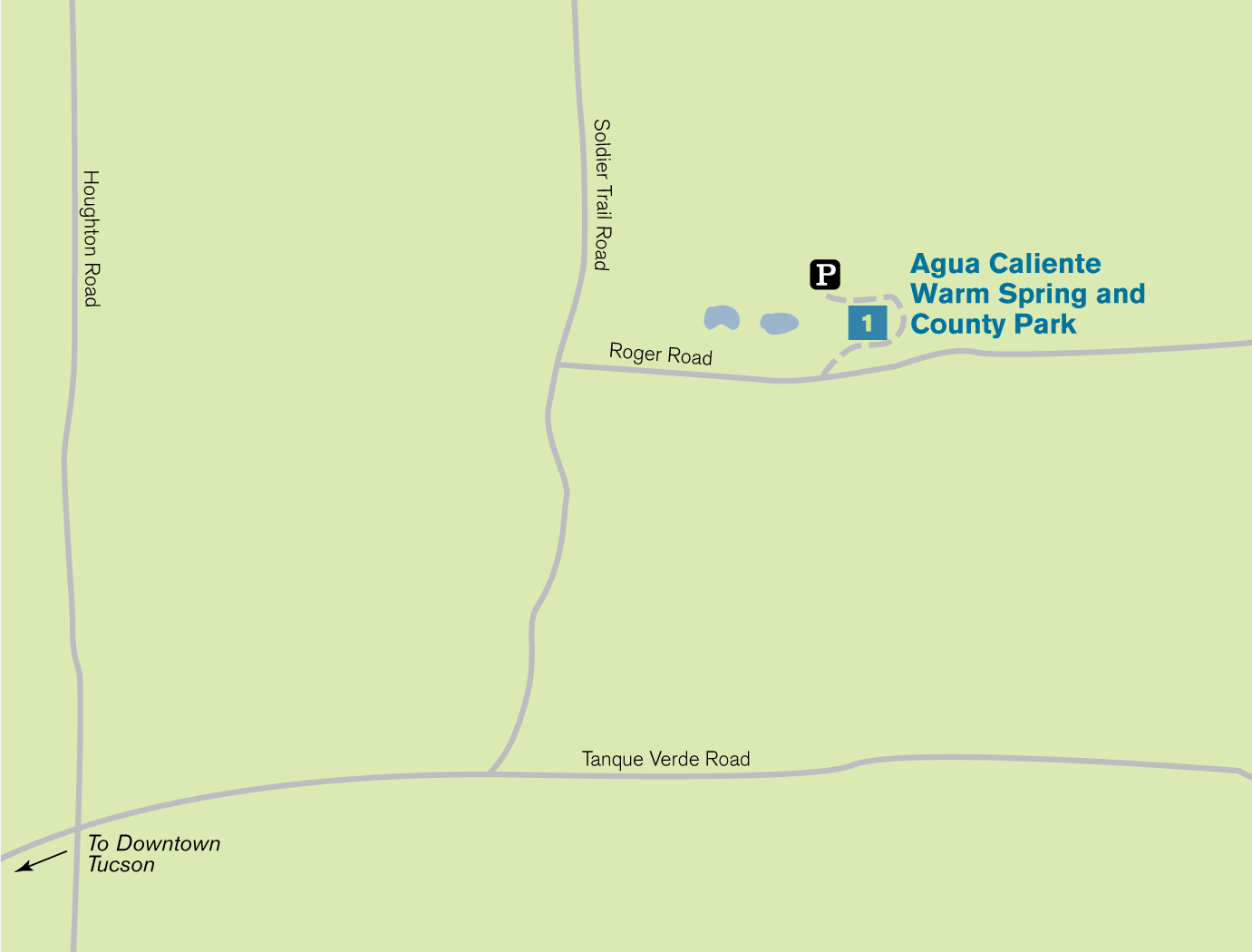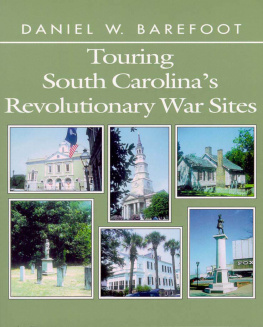ABOUT THE AUTHOR
Matt Bischoff lives in Monterey, California, with his wife, Patty, and his sons. He is a professional historian by trade, currently working for California State Parks. One of his greatest enjoyments is exploring Gods creation and seeking out new hot springs. Often, the story surrounding the hot spring is just as interesting as the hot spring itself, as each one has its own unique history. The hot springs listed in this book are some of his favorites for a variety of reasons. His hope is that you will find the same thrill in discovering a new hot spring or learning a little bit more about its story.
FURTHER READING
Back, William, Edward R. Landa, and Lisa Meeks. 1995. Bottled Water, Spas, and Early Years of Water Chemistry. Ground Water. Volume 33 (JulyAugust): 605614.
Kupel, Douglas E. 1996. Taking a Bath: Civic Improvement in Clifton. The Journal ofArizona History. Volume 37 (Autumn): 269282.
Mariner, R. H., T. S. Presser, and W. C. Evans. 1977. Chemical, Isotopic, and Gas Compositions of Selected Thermal Springs in Arizona, New Mexico, and Utah. Open-File Report 77654. US Geological Survey.
Waring, Gerald A. 1965. Thermal Springs of the United States and Other Countries of the WorldA Summary. Geological Society Professional Paper 492. US Geological Survey.
1. AGUA CALIENTE WARM SPRING
General description : This small warm spring forms an inviting oasis in the middle of the dry Sonoran Desert. Although Agua Caliente is a beautiful setting, the spring is not a place to bathe, as it is within a small county park.
Location: On the extreme northeast side of Tucson, within the city limits
Primitive/developed: The spring has not been developed, although several pools have been formed from its runoff;. The spring is located within a county park with picnic tables, restrooms, and older buildings.
Best time of year: Fall, winter, and spring. Summers are too hot.
Restrictions: This is a county park, and all posted rules must be obeyed. No swimming or fishing is allowed in the ponds.
Access: Located immediately off; a paved road, the spring can be reached by any vehicle.
Water temperature: The source is approximately 85 degrees, cooling as it flows downhill in a small creek and eventually into the ponds.
Nearby attractions: Santa Catalina Mountains; Coronado National Forest; Sabino Canyon Recreation Area; Tucson
Services: Gas, food, and lodging can be found in Tucson, all three less than 10 miles away.
Camping: Camping is not permitted at Agua Caliente itself. There are several campgrounds in the Coronado National Forest in the Santa Catalina Mountains.
Map: USGS Tucson quadrangle (1:100,000 scale). The spring does not show on most Tucson city maps.
Finding the spring: From downtown Tucson, travel east on Speedway, turning left (north) on Kolb. Travel on Kolb to Tanque Verde, where you turn right (east). Travel out of town on Tanque Verde to signs for Agua Caliente Park, where you will turn left (north) on Soldier Trail, which is 2 miles east of the intersection of Tanque Verde and Houghton. Travel north on Soldier Trail for 2 miles to Roger Street, where you turn right (east). Travel 0.5 mile on Roger to the park on your left (north side of road).
THE HOT SPRINGS
Agua Caliente is conspicuous due to its verdant palm tree grove, standing in stark contrast to the more subdued colors of the surrounding desert. The spring itself lies within a grove of palm trees at the east end of the park, near some picnic tables. The spring bubbles out of the ground at approximately 85 degrees, crystal clear. The water flows downhill in a small creek surrounded by dense palm tree growth. Within the water live several types of fish and a variety of water insects. The water eventually flows into a large pond, frequented by several ducks. Below this largest pond, the water flows into two more ponds. Trails link all these ponds together.
Located in Pima Countys Roy P. Drachman Agua Caliente Regional Park, Agua Caliente contains the remains of a historic ranch. Several old buildings dot the landscape in differing states of disrepair. The warm springs have always been an important locale in the area, and in the past were used by Native Americans as well as the US military. The county is currently improving the grounds of this park for enhanced visitor use. The spring does not offer any bathing opportunities, nor is this permitted, but the park is a peaceful oasis well worth a visit.

Agua Caliente Ranch was established in the early 1870s, during a time in which settlers first began to venture beyond the banks of the Santa Cruz River in Tucson proper. Prior to that time, it was far too dangerous to settle in these outlying areas because of the ever-present Apache threat. This ranch was typical of many, in that it was owned by several different individuals over its lifetime. Prior to the arrival of white settlers, however, the warm springs were the site of a prehistoric village inhabited by Native American people known as the Hohokam.
By 1872 the springs were owned by Peter Bain. He sold the property to James Fuller, who became famous for the extra-large vegetables and melons he grew on the ranch. Fuller eventually developed the property into a resort. Agua Caliente became well-known for the curative powers of the warm spring water. Fuller built several buildings, including a bathhouse on an island in the large pond, and also developed extensive gardens and orchards.
Subsequent owners continued to utilize the property as a ranch and warm spring resort. In 1984 Roy Drachman purchased the property, and the following year donated it to Pima County, which opened it to the public. Several buildings remain from various periods in the ranchs history. Many others are gone. Today, the property is listed on the National Register of Historic Places. Friends of Agua Caliente have been instrumental in restoring the historic buildings.
The Ranch House Visitor Center is open May 1 to Oct 31, Tues through Sat, from 9 a.m. to 2 p.m.; Nov 1 to Apr 30, Wed through Sun, from 10 a.m. to 3 p.m.; closed holidays. Pima County is in the process of restoring both ponds to ensure their ability to hold water. One of the ponds nearly went dry during droughts in the early 2000s. Pond 1 has recently been restored, and plans are underway to restore Pond 2.
The parks address is 12325 E. Roger Rd., Tucson, AZ 85749. For more information, call (520) 724-5000 or visit http://webcms.pima.gov/cms/one.aspx?portalId=169&pageId=1503.

The spring at Agua Caliente is located in a lush palm grove that stands in stark contrast to the surrounding desert environment. Bathing is not allowed.
2. QUITOBAQUITO WARM SPRINGS
General description: This collection of warm springs forms a pond and lush oasis in the dry Sonoran Desert of Organ Pipe Cactus National Monument.
Location: Extreme southwestern Arizona, approximately 90 miles south of Gila Bend and 158 miles west of Tucson. The springs are also located immediately north of the international boundary with Mexico.
Primitive/developed: Primitive. The springs have been covered with metal plates to protect the water source, and some of the water has been channelized into the pond. A few trails and interpretive signs have been established.




